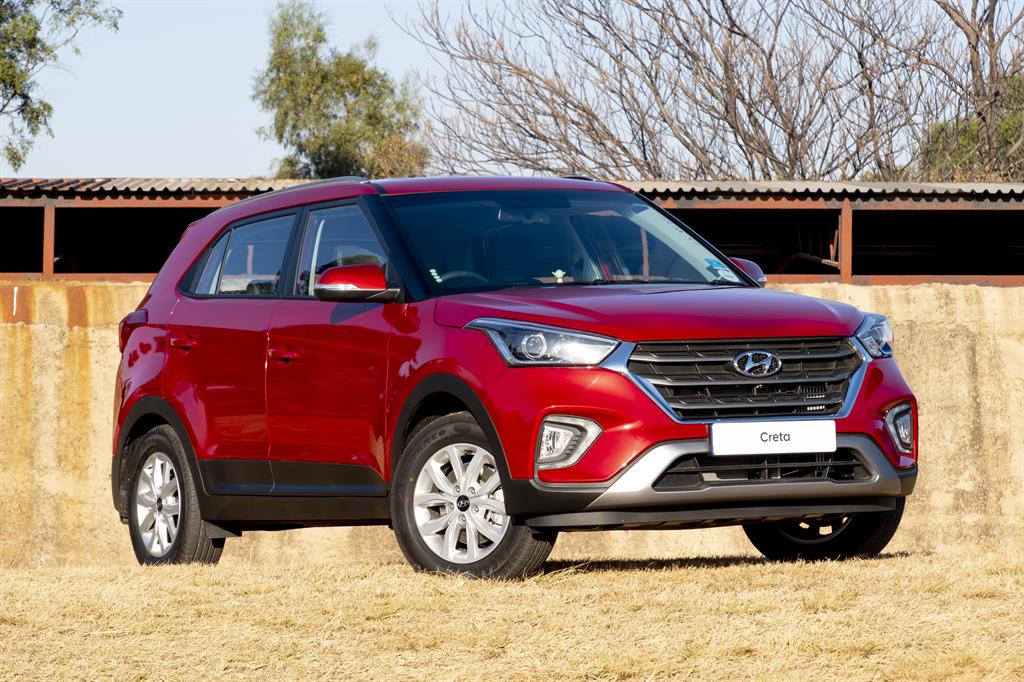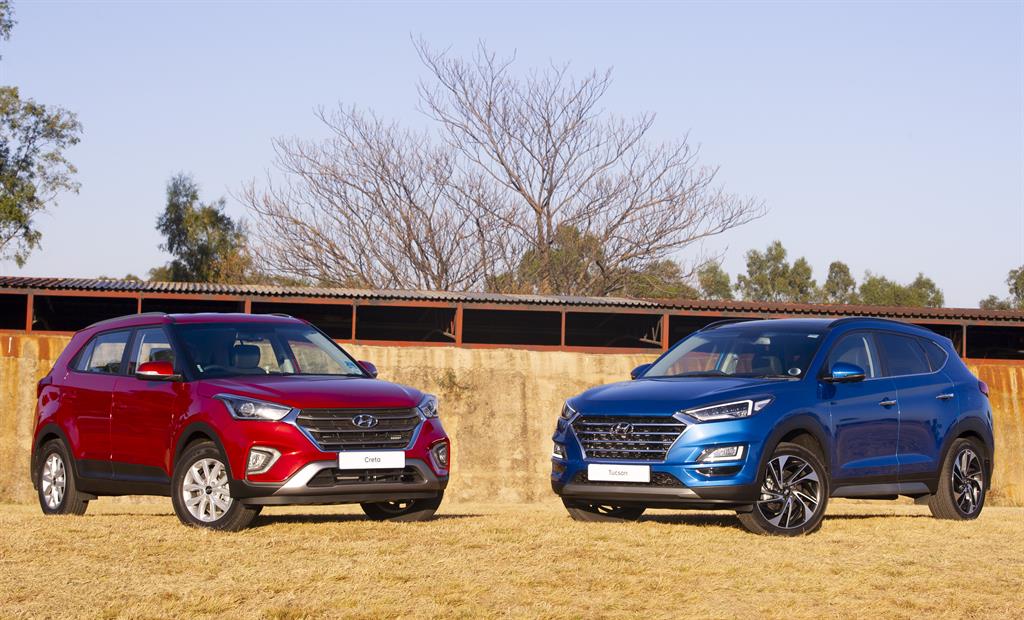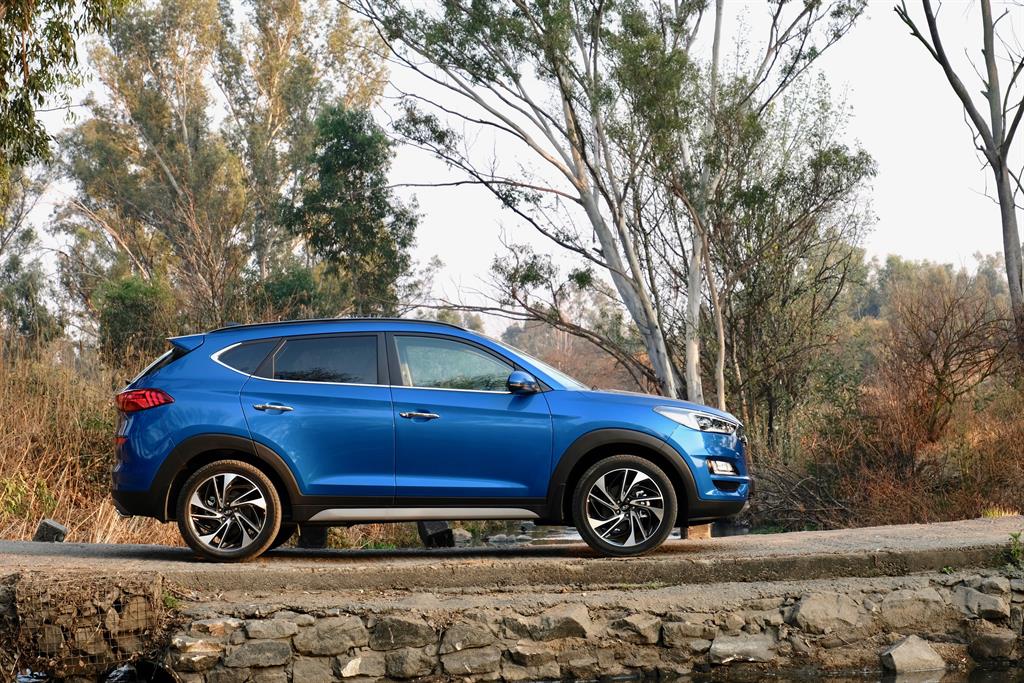Tucson and Creta receive a facelift
Hyundai’s hot-ticket SUVs get a fresh new look, new gearboxes and a refreshed line-up.
QUICKPIC
Two of Hyundai’s top-selling models – the Tucson and Creta sports utility vehicles (SUVs) – have been launched with fresh new design features, new gearboxes and a few derivative changes for the Tucson range.
Hyundai’s Tucson, which has been a top-contender in its market segment since the launch of the first generation in 2009, has been given a new front and rear appearance with the addition of the Hyundai signature cascading grille, along with a new design headlight, fog lamp, front bumper and skid plate.
The Tucson’s interior is also new, sporting a redesigned dashboard with a floating seven-inch screen for its infotainment system that offers features such as Apple’s CarPlay.
Two new derivatives were introduced in the revised in the Tucson range, and a new seven -speed Dual Clutch Transmission and eight-speed automatic transmission form part of the changes in the Tucson line-up.
Its SUV sibling, the Creta – which has registered more than 8 000 unit sales since its launch in 2017 – also received an exterior makeover that comprises a new Hyundai trademark cascade grille with a chrome bezel; a new front bumper with dual-tone finish and skid plates; new fog lamps and LED daylight running lights; and a new set of roof rails with a lower profile.
The rear profile of the Creta has also been revised with slightly tweaked tail-lamps with LED inserts, repositioned reflectors and a new rear skid plate. As with the Tucson, the Creta sports a new alloy wheel design.
The Tucson’s sporty exterior design is achieved by the cascading grille and the refined new light signature with full LED headlights, which give the car a high-tech image. An uplifted front bumper, refined skid plate complement the Tucson’s exterior appearance.
At the rear, the Tucson was also given a new rear taillight design, with a redesigned bumper and exhaust tailpipe to finish the picture. Its side profile features a new 19” wheel design for the flagship 1.6 TGDI Elite derivative.
“Namibians love SUVs and bakkies, so these two models are important to us as a dealer, not only because they make up 40 percent of our sales of late but because they are outstanding vehicles which have shown themselves capable of being strong contenders in this very competitive segment,” said Tertius Annandale, dealer principal of Hyundai Windhoek.
Interior evolution
Tucson’s completely new upper dashboard features high-quality, soft-touch material with a double stitching line for a more high-quality feeling in the interior. The focal point of the centre console is the floating audio system screen, which has an ergonomic position to allow drivers to stay focused on the road. The infotainment system in the Tucson offers a satellite navigation function when used with one’s Apple cellphone and CarPlay.
Seven Tucson derivatives, 3 engines
The new Tucson range in Southern Africa features seven derivatives, with a choice between three engines – a naturally aspirated two-litre petrol engine; a turbocharged 1.6-litre petrol engine; and a two-litre turbocharged diesel – and three specification levels. All derivatives all front-wheel driven.
Engines used in the Elite derivatives are the two-litre petrol; the two-litre turbodiesel; and a 130 kW, 265 Nm turbocharged four-cylinder petrol engine which is coupled with a seven-speed dual-clutch transmission.
Hyundai’s new in-house developed 7DCT transmission is a state-of-the-art gearbox. Compared with an automatic transmission, it enhances fuel consumption, CO2emissions and performance while maintaining its high shifting quality.
Creta keeps same high specification level
Hyundai has kept the same derivative line-up, engine and gearbox choices, and specification configuration for the Creta range.
All three Creta derivatives are sold with the Executive level of standard features, which includes leather seats, leather cladding for the steering wheel, multi-function remote controls for the Bluetooth telephone, sound and radio system, and an eight-inch touch-screen display for the infotainment system.
Convenience features in the Creta include air vents for the rear passengers, a rear armrest with cup holders, cruise control, rear park assist sensors and a camera that displays its images on the screen of the infotainment system.
The Creta’s exceptional ride quality and outstanding road holding are achieved by a McPherson strut front suspension with gas dampers. An increased caster angle delivers a more stable, smoother high-speed travel.
At the rear, revised geometries of the dampers used with the coupled torsion beam axle have delivered an increase lever ratio that generates gentle understeer for better cornering performance.
Safety
Apart from the Blind Spot Detection and Cross Traffic Alert (in the Executive and Elite versions), the Tucson has passive safety features such as dual front and side airbags (driver and passenger) and curtain airbags that offer protection for rear passengers too in all derivatives.
Executive and Elite derivatives of the Tucson are also equipped with vehicle stability management that keeps the car stable on wet, slippery or rough roads, as well as hill-start assist control to prevent roll-back when pulling off against an incline.
Safety features in the Creta include dual front and side airbags for driver and passenger, and curtain airbags for protection of rear passengers as well. The Creta is also equipped with an Anti-lock Brake System (ABS) and Electronic Braking Distribution (EBD).
Two of Hyundai’s top-selling models – the Tucson and Creta sports utility vehicles (SUVs) – have been launched with fresh new design features, new gearboxes and a few derivative changes for the Tucson range.
Hyundai’s Tucson, which has been a top-contender in its market segment since the launch of the first generation in 2009, has been given a new front and rear appearance with the addition of the Hyundai signature cascading grille, along with a new design headlight, fog lamp, front bumper and skid plate.
The Tucson’s interior is also new, sporting a redesigned dashboard with a floating seven-inch screen for its infotainment system that offers features such as Apple’s CarPlay.
Two new derivatives were introduced in the revised in the Tucson range, and a new seven -speed Dual Clutch Transmission and eight-speed automatic transmission form part of the changes in the Tucson line-up.
Its SUV sibling, the Creta – which has registered more than 8 000 unit sales since its launch in 2017 – also received an exterior makeover that comprises a new Hyundai trademark cascade grille with a chrome bezel; a new front bumper with dual-tone finish and skid plates; new fog lamps and LED daylight running lights; and a new set of roof rails with a lower profile.
The rear profile of the Creta has also been revised with slightly tweaked tail-lamps with LED inserts, repositioned reflectors and a new rear skid plate. As with the Tucson, the Creta sports a new alloy wheel design.
The Tucson’s sporty exterior design is achieved by the cascading grille and the refined new light signature with full LED headlights, which give the car a high-tech image. An uplifted front bumper, refined skid plate complement the Tucson’s exterior appearance.
At the rear, the Tucson was also given a new rear taillight design, with a redesigned bumper and exhaust tailpipe to finish the picture. Its side profile features a new 19” wheel design for the flagship 1.6 TGDI Elite derivative.
“Namibians love SUVs and bakkies, so these two models are important to us as a dealer, not only because they make up 40 percent of our sales of late but because they are outstanding vehicles which have shown themselves capable of being strong contenders in this very competitive segment,” said Tertius Annandale, dealer principal of Hyundai Windhoek.
Interior evolution
Tucson’s completely new upper dashboard features high-quality, soft-touch material with a double stitching line for a more high-quality feeling in the interior. The focal point of the centre console is the floating audio system screen, which has an ergonomic position to allow drivers to stay focused on the road. The infotainment system in the Tucson offers a satellite navigation function when used with one’s Apple cellphone and CarPlay.
Seven Tucson derivatives, 3 engines
The new Tucson range in Southern Africa features seven derivatives, with a choice between three engines – a naturally aspirated two-litre petrol engine; a turbocharged 1.6-litre petrol engine; and a two-litre turbocharged diesel – and three specification levels. All derivatives all front-wheel driven.
Engines used in the Elite derivatives are the two-litre petrol; the two-litre turbodiesel; and a 130 kW, 265 Nm turbocharged four-cylinder petrol engine which is coupled with a seven-speed dual-clutch transmission.
Hyundai’s new in-house developed 7DCT transmission is a state-of-the-art gearbox. Compared with an automatic transmission, it enhances fuel consumption, CO2emissions and performance while maintaining its high shifting quality.
Creta keeps same high specification level
Hyundai has kept the same derivative line-up, engine and gearbox choices, and specification configuration for the Creta range.
All three Creta derivatives are sold with the Executive level of standard features, which includes leather seats, leather cladding for the steering wheel, multi-function remote controls for the Bluetooth telephone, sound and radio system, and an eight-inch touch-screen display for the infotainment system.
Convenience features in the Creta include air vents for the rear passengers, a rear armrest with cup holders, cruise control, rear park assist sensors and a camera that displays its images on the screen of the infotainment system.
The Creta’s exceptional ride quality and outstanding road holding are achieved by a McPherson strut front suspension with gas dampers. An increased caster angle delivers a more stable, smoother high-speed travel.
At the rear, revised geometries of the dampers used with the coupled torsion beam axle have delivered an increase lever ratio that generates gentle understeer for better cornering performance.
Safety
Apart from the Blind Spot Detection and Cross Traffic Alert (in the Executive and Elite versions), the Tucson has passive safety features such as dual front and side airbags (driver and passenger) and curtain airbags that offer protection for rear passengers too in all derivatives.
Executive and Elite derivatives of the Tucson are also equipped with vehicle stability management that keeps the car stable on wet, slippery or rough roads, as well as hill-start assist control to prevent roll-back when pulling off against an incline.
Safety features in the Creta include dual front and side airbags for driver and passenger, and curtain airbags for protection of rear passengers as well. The Creta is also equipped with an Anti-lock Brake System (ABS) and Electronic Braking Distribution (EBD).










Kommentaar
Republikein
Geen kommentaar is op hierdie artikel gelaat nie